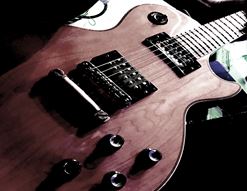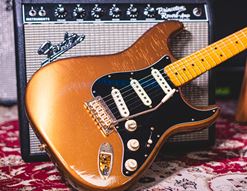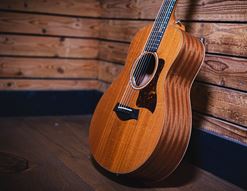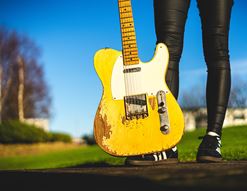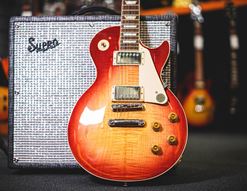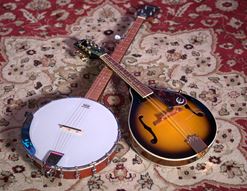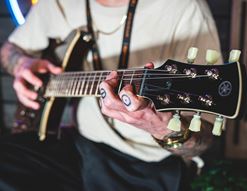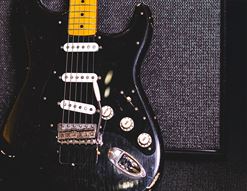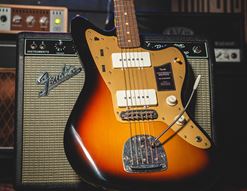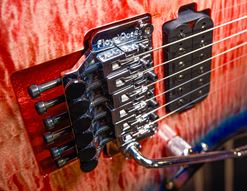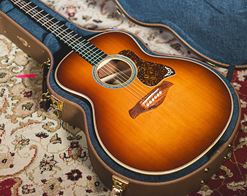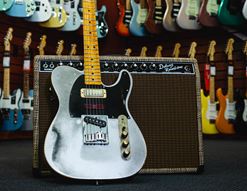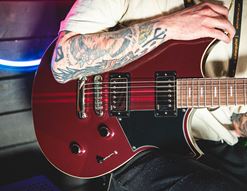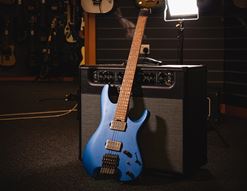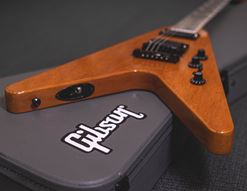Gibson guitars are one of the real originals. One of the best-loved and most revered brands in musical instrument history, only Fender can rival Gibson for significance and influence.
In today’s blog, I’ll take you through a timeline of Gibson’s history, from the Wild West (almost) right up to today. It’s a tall task for any blog, so what I won’t do is labour the details: we’ll visit the most noteworthy moments in Gibson’s lifetime, and hopefully chain together a broad ‘primary colours’ history that you can enjoy in a general way.
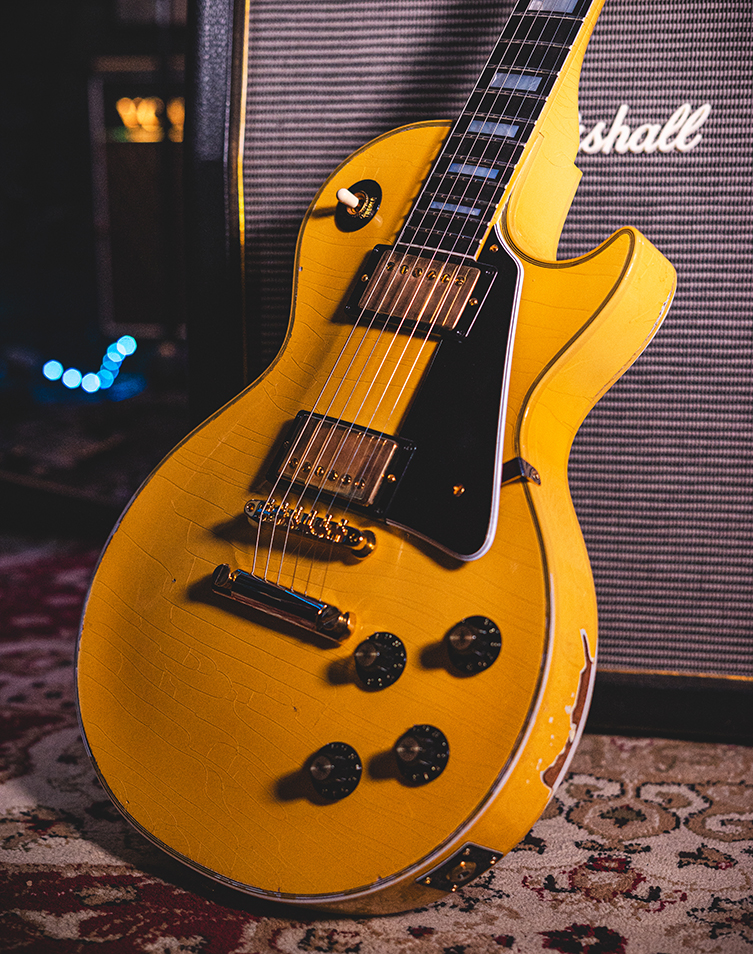
Hopefully this blog will be a good jumping-off point for your fascination: If you become more interested in any area covered here, you’ll be able to charge off on your own ‘side quest’ and fill in the details to your satisfaction. It’s all part of the fun!
So, saddle up pardner, because we are going back to Tennessee in 1894…
1894: Orville Gibson, a Troubled Genius
Oville H Gibson is the name who began it all. Never formally trained, Orville built violins and mandolins as a hobby whilst working in a shoe store. The native New Yorker (to an English father and New York mother) was born in 1856, ahead of the American Civil War and the WIld West years (which were arguably already happening in certain parts of the USA. His creations were innovative, and in May 1896 he even applied for his one & only patent. That patent - for a mandolin that had a carved top & back, along with sides cut from a single piece of timber (rather than having layers bent and shaped), was issued nearly two years later in February 1898.
In the 1890s, Orville began to design and create original design hollowbody guitars with distinctive carved tops. This is the beginning of those historical guitar acoustics we’ve all seen from afar and loved accordingly, with their longer, slimmer bodies and artistic flourishes.
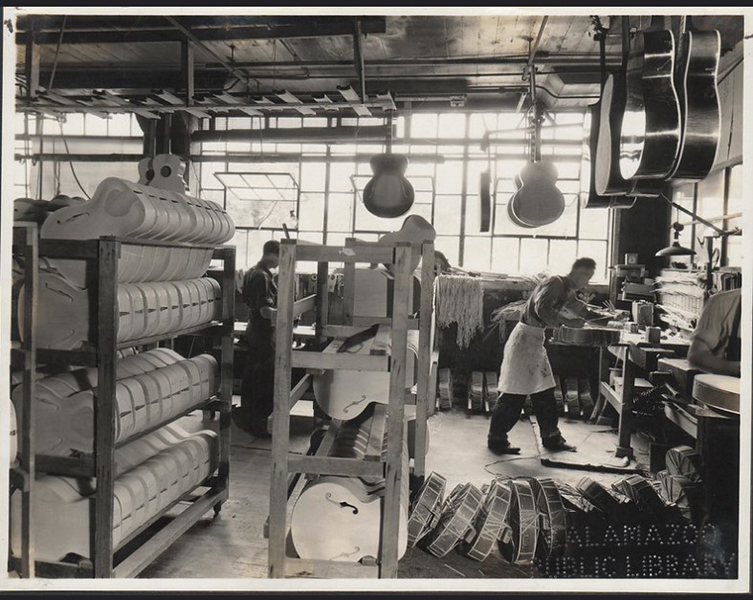
1902: Kalamazoo
Orville’s impressive work had long since attracted attention from local musicians and businessmen, and so in 1902, he entered into business with five financiers and opened the Gibson Mandolin and Guitar Manufacturing Company in Kalamazoo, Michigan.
Records don’t fully explain why he left New York for Kalamazoo, but later health records attest to - or at least suggest - chronic illness of some type, along with weight loss and possible mental illness.
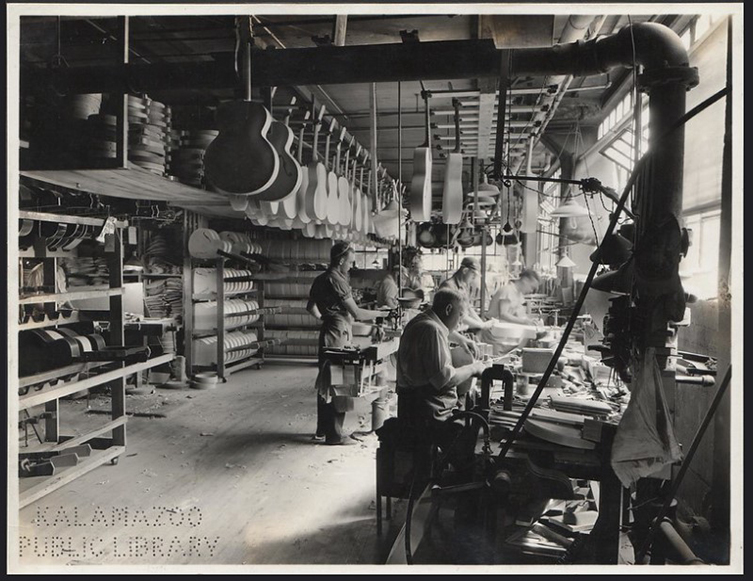
Always an eccentric man, it’s actually unclear whether Gibson was a full-on partner in his own company or just a consultant. Certainly, the ‘board’ notes do mention - with slight reproach - that “Orville H. Gibson be paid only for the actual time he works for the Company.” This, added to the fact that the town records actually list him as a music teacher paint a slightly unusual picture of the creative genius whose inspired designs were fast becoming the most sought-after instruments in Northeast and beyond. Gibson lived on royalties and licences from his designs, and seems to have developed something of a distance from the company that bore his name.
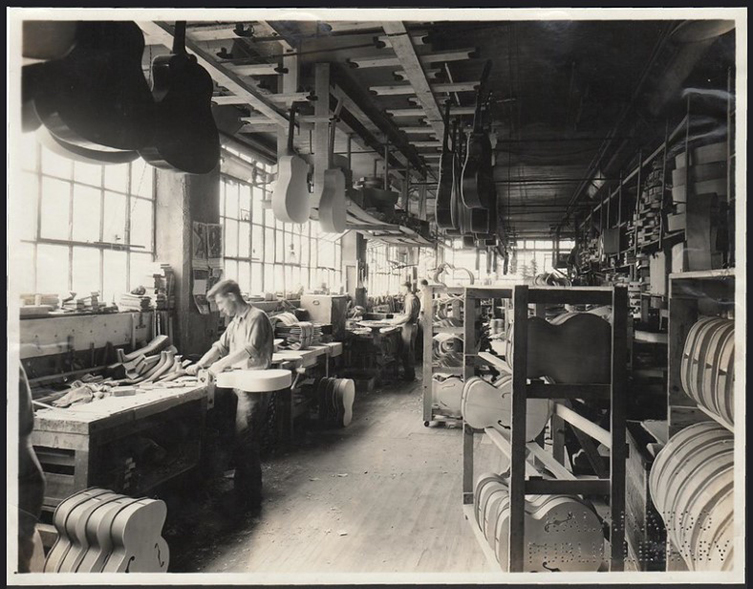
1918: Orville Dies, Lloyd Loar Appears
Orville’s health was always up and down throughout his life, with details on medical reports vaguely mentioning stays in various establishments. He died in 1918 of endocarditis.
A year later, the Gibson company hired Lloyd Loar to design new instruments. His is a name you’ll come across often when reading about this period of guitar design - indeed, companies exist today that replicate his designs only!
Loar contributed two pretty significant designs for Gibson: the L-5 archtop and the F-5 mandolin. These are cherished pieces today, as rare examples are still available of both. Loar left Gibson in 1924. Around this time, another employee named Ted McHugh, came through with two inventions whose importance cannot be understated: the height-adjustable bridge and the adjustable truss rod. To this very day, McHugh’s truss rod design is the one in use throughout all Gibson guitars.
The First Golden Age, and Rivalry with Epiphone
Riding on the success of not only Loar’s designs but the existing L-1 and L-2 guitars, Gibson moved into the roaring twenties and the Jazz age. Music was getting louder and so guitars were getting bigger to hold their own in the volume stakes.
Gary Hart took over command of Gibson from 1924 until 1948, and under his control, great strides were made. 1936 saw the release of the Gibson ES-10, the first commercially produced hollowbody guitar with a pickup. The pickup itself was a single coil unit named the ‘Charlie Christian’ after the popular artist of the time. This was a game changer, and promoted the guitar to the front of the ranks in terms of volume and visibility.
Back in New York, another guitar company was making no bones about directly competing with Gibson. The brainchild of another eccentric, Epiphone guitars had come across the oceans from Greece, where they’d also started out making mandolins. Brand boss Epaminondas ‘Epi’ Stathopoulos was a charismatic man who hung out with the jazz cats of the 20s and made it his point to beat Gibson at every juncture.

For example, when Gibson created the Super 400 - their biggest guitar at 18 ¼” wide - Epiphone responded with the Emperor, a similarly large guitar but with a crucially larger 18.5” width: a realistically negligible difference, but on paper, it was the biggest!
So it went throughout the roaring twenties and thirties. Epi was a musician himself and played up to the difference between him and Gibson’s Guy Hart, who was basically an accountant. The rivalry is sometimes described as a sort of ‘Buick/Chevy’ thing, as both guitar brands were equal in quality but sonically different.
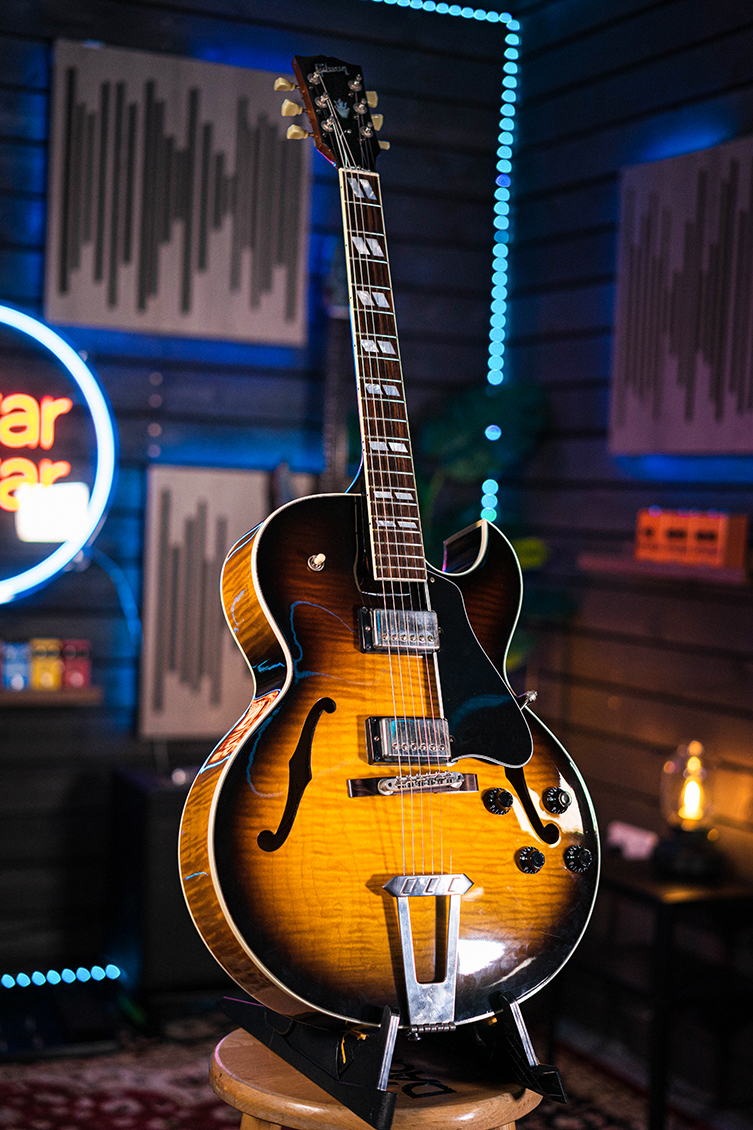
Sadly, as we know, the world got extremely dark in 1939. Epi tragically died during this period, and the company was never the same again. We’ll come back to Epiphone soon, but we’ll leave them here for now.
1952: Les Paul
Fender changed the world in 1950 with the Broadcaster (see our History of the Telecaster blog for more) and Gibson had to respond with their own take.
Les Paul was a famous TV personality, musician and inventor who liked to hang out at Epi’s New York factory, even going as far as trying to have his ‘log’ solid body guitar invention marketed to no avail. The tune changed in 1952 when Gibson collaborated with the star on their own solid body guitar.
I hardly need to explain what this one was, right? It’s the most famous Gibson guitar in the world, and in 1952 it delivered a sound that was warm, rich and full of sustain compared to Fender’s efforts. It’s worth noting that Les Paul didn’t design the guitar that bore his name: he was involved in its development, but the guitar was designed by John Huis. Les Paul appeared in adverts with it, and played it on his TV show right up until 1962, when Gibson changed the shape, but I’m jumping ahead!
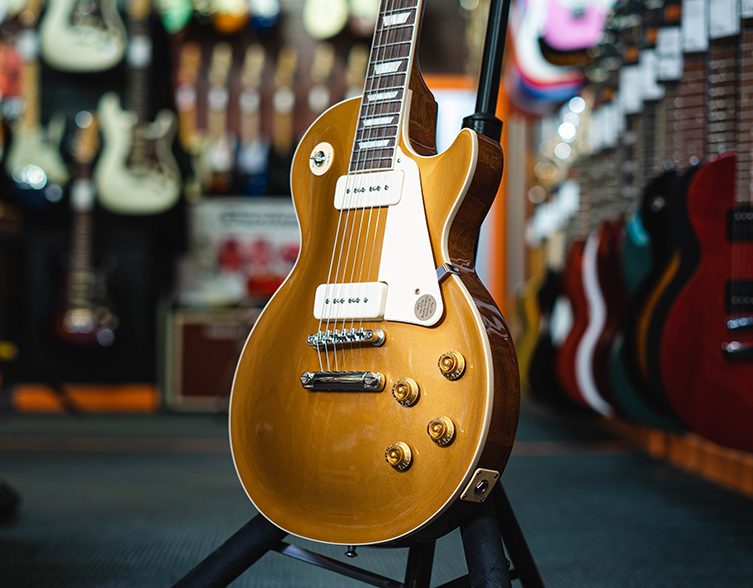
The Les Paul’s history is well known to most of us, but in brief points, it began as a goldtop with P90s (alongside a Custom model in black with more binding etc). 1957 saw Gibson designer Seth Lover invent the humbucking pickup. The actual patent of the legendary PAF ‘Patent Applied For’ was granted but the name had already stuck, so that’s what these pickups have eternally become known. They were added to Les Paul models in 1957.
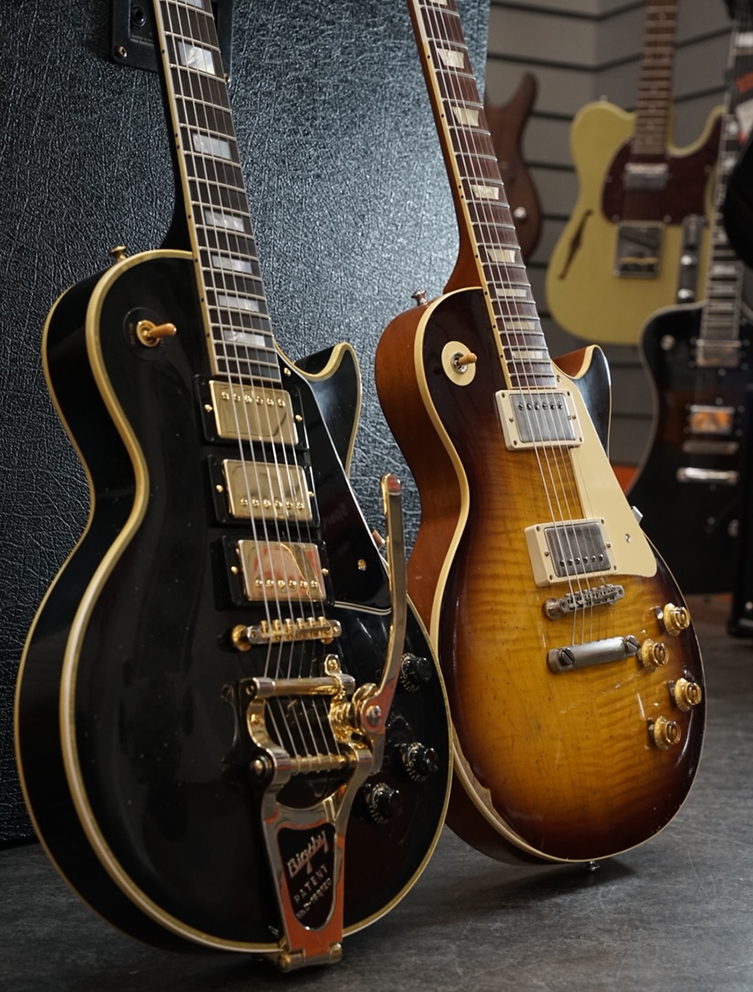
Also in 1957, Gibson - on Les Paul’s advice - bought the ailing Epiphone brand. It has forever since been owned by Gibson.
1958: Sunburst Les Pauls, the ES335 and the Futura range
For Les Pauls, the years between 1958 and 1960 have retrospectively become the ‘Holy Grail period for the model. This was the time when Gibson issued the guitar as a ‘Sunburst Standard’, with the (on most occasions) figured maple top finishing in an eye-catching amber and cherry Sunburst colour. These were not hugely popular at the time, and in 1961, Gibson decided to try a different shape, resulting in the renamed ‘SG’ after Les Paul removed his name from the model.
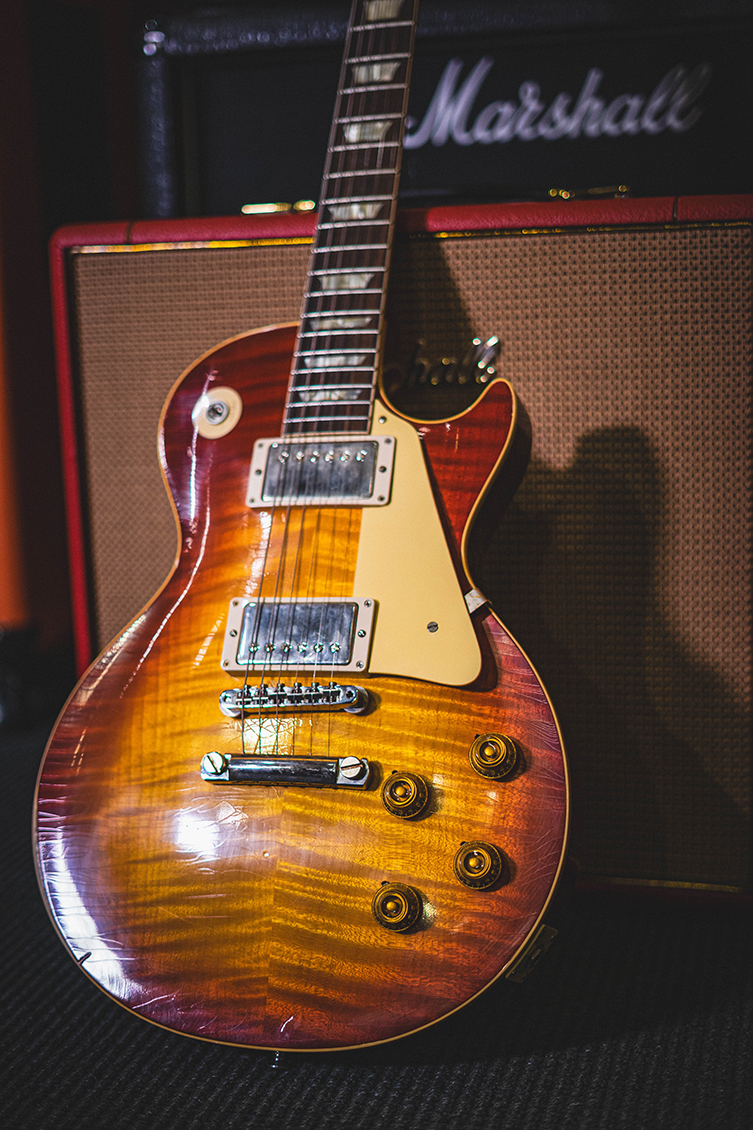
The British invasion guitarists would bring the Les Paul Standard back in vogue like never before, but in the late 50s, surf guitar rules and that genre did not require the thick sustain of a Les Paul. A few hundred were made in this period, with the neck profile of the guitars varying by a relatively wide margin during these years. As you’ll know, the guitars from 1959 are considered the finest that the company has ever produced, though in reality they were pretty inconsistent!
The late 50s weren’t all about Les Pauls, though. 1958 was the release of another Gibson classic: the ES335. ‘ES’ for ELectric Spanish, used since 1936 on the ES-10; and ‘335’ for how much a guitarist in 1958 would have to cough up in dollars to walk away with one of these beauties. The ES335 is a versatile semi-acoustic guitar with a thinline body (not as deep as other hollow bodies or acoustics) and a central strip of solid wood down the core of the body. This inner strip helped conquer feedback problems whilst still allowing the guitar to have that ‘semi hollow’ sound. It has never been out of production since.
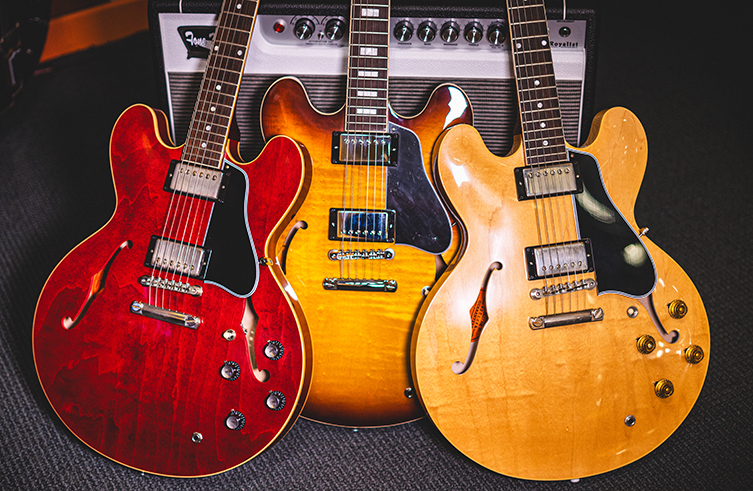
1958 was a busy year for Gibson, evidently! In addition to what we’ve already seen, there was the now-ionic Futura range too. You’ll know two of these very well - they are the Flying V and the Explorer, two of Gibson’s best-loved rock axes. Back in the late 50s, though, they were somewhat ahead of their time and were not massively popular. A third model, the Moderne, was never actually put into production until decades later, and then only as a sporadic curiosity.
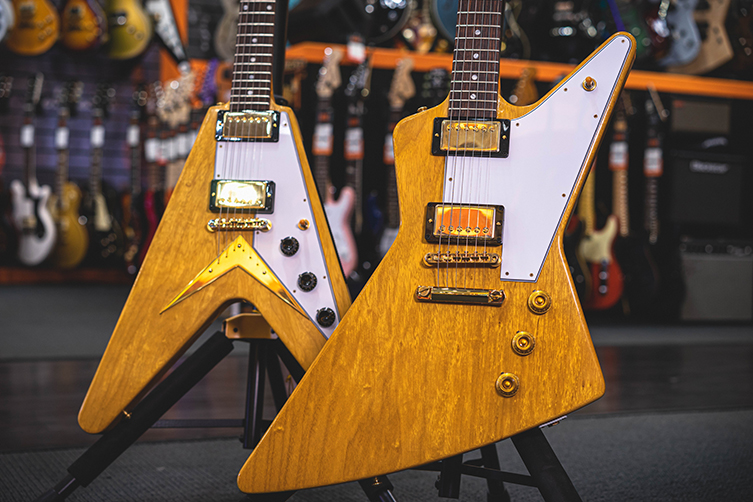
The V and Explorer found their fanbase during the heyday of 70s rock, and then thrash metal elevated the designs to essentials. It’s funny to think about it, but the V and the Explorer were actually withdrawn only a year after their initial release! Unthinkable now, rather like how the Les Paul - the world’s third best known guitar at least - actually went out of production for 8 years in the 60s!
1961 - The SG
Yes, Gibson weren’t selling enough Les Paul guitars so put the artist’s name on an entirely new design: a flatter-bodied double cutaway shape with distinct ‘devil horns’. Originally sold as the ‘Les Paul SG’, its adopted namesake did not appreciate the brand change and promptly asked for his name to be removed.
Undeterred, Gibson simply removed his name from the guitar and sold it as the SG, short for ‘Solid Guitar’. The Les Paul was reintroduced to the market officially in 1968 (some sources report the odd model from prior to this, but let’s keep things simple), and the two have lived together happily ever after. The SG found popularity across the rock spectrum, from the Grateful Dead to the Doors, and the Les Paul came back, as mentioned earlier, when the likes of Clapton, Beck, Page and Green connected its thick tone to the wail and crunch of a wound-up Marshall amp.
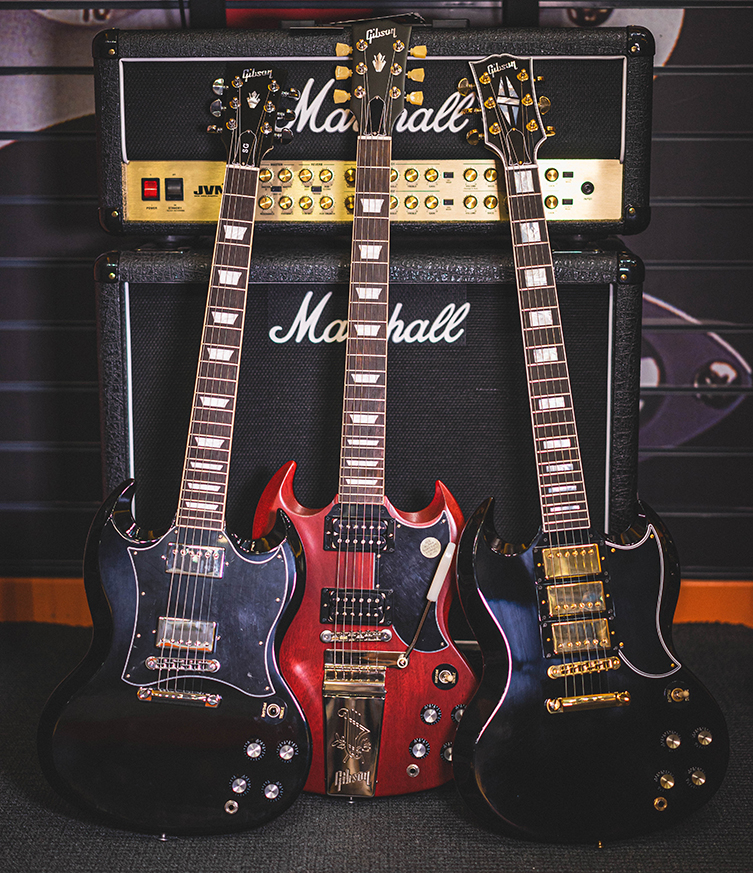
The SG at the time had a slimmer neck profile than the Les Paul, and its design allowed for greater upper fret access, making it a hit with 70s rockers such as AC/DC and Black Sabbath. Throughout the 50s and 60s, ‘Junior’ versions of both guitars had been made available from Gibson, with simpler designs allowing for quicker and cheaper builds. The Junior models tended to sport a single P90 pickup, with the Special models favouring two.
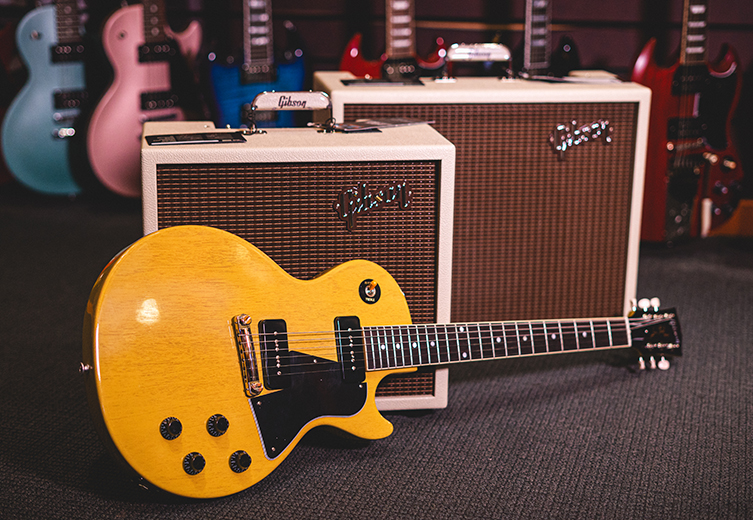
Variations abounded - and still do - making these guitars perhaps a subject in their own right. That said, they form an important part of the Gibson story, and lots of today's superstars (Billie Joe Armstrong springs to mind) choose these models over more supposedly ‘professional’ guitars like the Standard or the Custom.
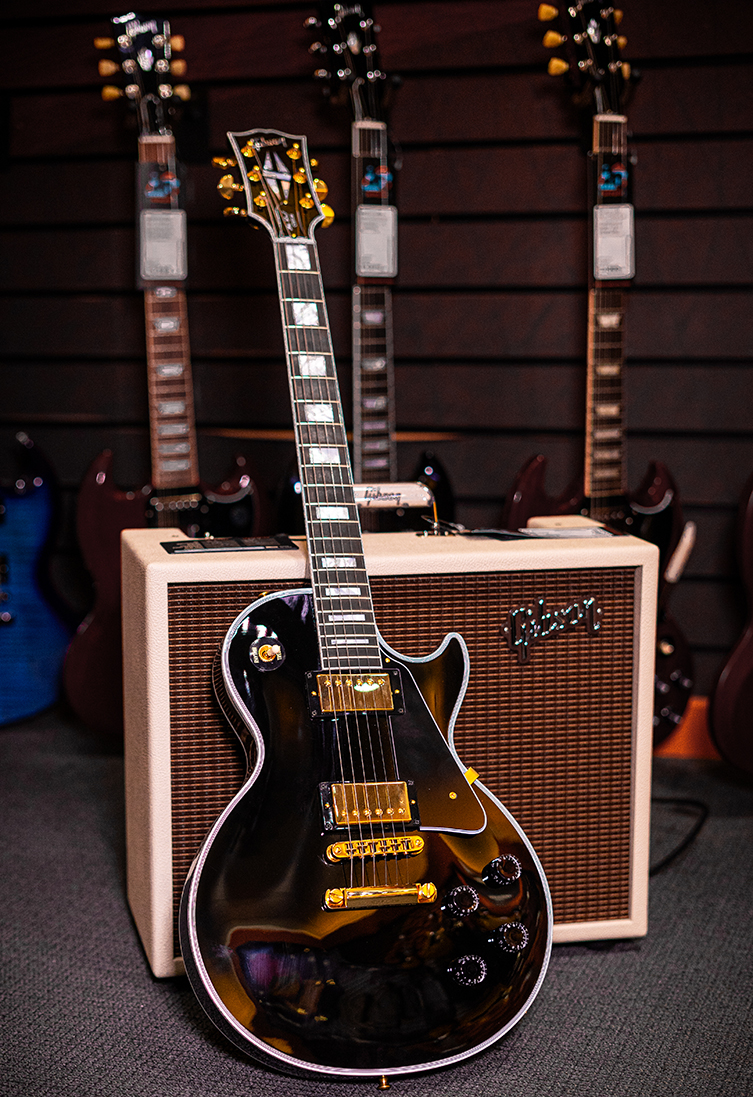
The Norlin Years
Gibson was owned by the Chicago Musical Instruments (CMI) company, which sold to ECL, a South American brewing conglomerate. CMI kept running things until 1974 when a new subsidiary of ECL known as Norlin took control. Opinions nowadays are beginning to differ, but back in the 70s, most guitar fans were disappointed in the Gibson guitars being made. Costs were cut and quality dipped, until a point came when many overseas copycat brands were putting out comparable - and sometimes better - guitars for considerably less cost.
This was also the era in which Gibson left Kalamazoo for Nashville, Tennessee, where they remain. Corporate mismanagement took Gibson to the point of being almost out of business until Henry Juskewicz bought the brand in 1986.
The Henry Era
This brings us almost to the modern era for Gibson. Under the leadership of Juskiewicz, the company’s fortunes began to improve: order went up, quality went up, and Gibson started to understand its own legacy better. The Arts & Historic department - a precursor to today’s Custom Shop - began building replicas of famed instruments such as the ‘59 Les Paul Standard and so on. They understood their legendary status and were able to leverage that on the market. The guitars were good again!

This era lasted until relatively recently, and at the end, the wheels were beginning to go loose again. Gibson Robot guitars with self-turning motorised tuners. The Dusk Tiger guitar with its horrific ‘formica and plastic look’. The worst offender was the Firebird X, a woefully misjudged creation with a host of overegged technology built into one very unfortunate looking guitar. Even Gibson themselves admitted as much in a video that saw a steamroller driving over a pile of defective Firebirds.
Not great.
The New Age
Today, we are possibly living in the best age of Gibson guitars. Gibson are being run by a team who seem passionate about the legacy they are taking care of, and all releasing the type of instruments that made the brand classic to begin with.
Gibson have divided most of their instruments into two overall collections, the Original Collection and the Modern Collection. You can read more about it here in our guide to the Gibson Ranges, but the short take is that we as guitarists have a more comprehensive (and more sensible) range of Gibson guitars than at any point previously.
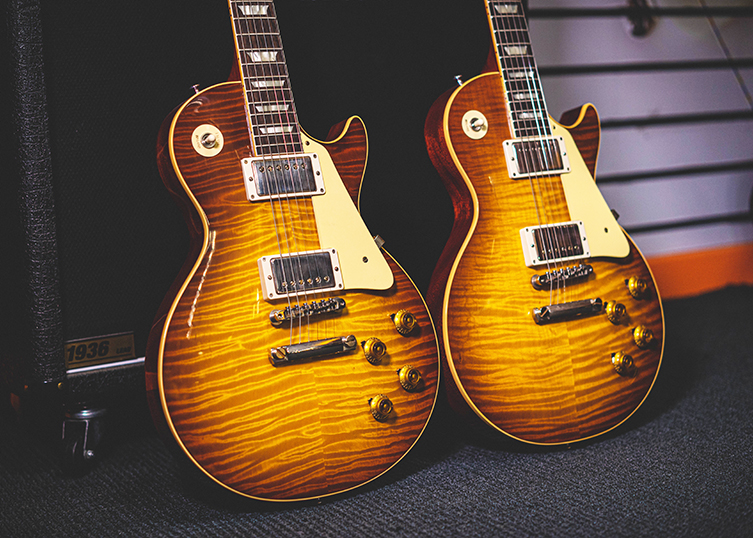
The well-heeled among guitarists can buy a fastidiously, exhaustively, forensically recreated ‘59 Les Paul that is indistinguishable from the vintage item, right down to the Murphy Lab’s extra work and detailing on the ageing process.
Serious players who are less fiscally fortunate will find some of the best Gibson USA instruments that have been available for many years, in all of the finishes and configurations you’d hope for.
Guitarists on a budget can buy from Epiphone’s roster of ever-impressive guitars (better than ever, in point of fact), with the added knowledge of that company’s cooler-than-cool history. Epiphone guitars are being played by pros in a way they never were before (excepting The Beatles’ use of the Casino, of course) and are legitimate choices for the gigging and recording artist.
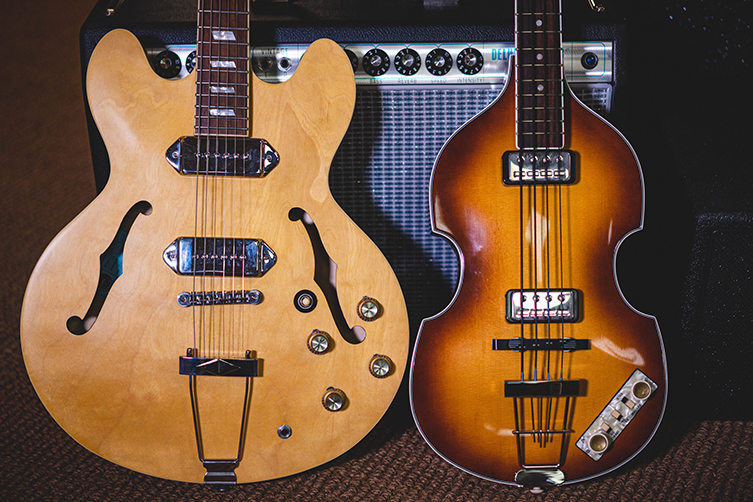
Why Gibson?
Today, we as guitarists have more choice than ever before: more brands, more features, more shapes, more sounds and more prices. Whatever your needs, there's likely to be an almost perfect solution available from one brand or another.
So, why Gibson? It’s a fair question. Gibson guitars are one of those ‘real deal’ situations, when you are buying into a brand with rich heritage, superstar association, USA manufacture and ‘correct’ shapes, as opposed to non copyright-infringing variations. There is absolutely something to the notion of playing an authentic looking, feeling and sounding instrument, particularly when they are being made to a high level of quality.
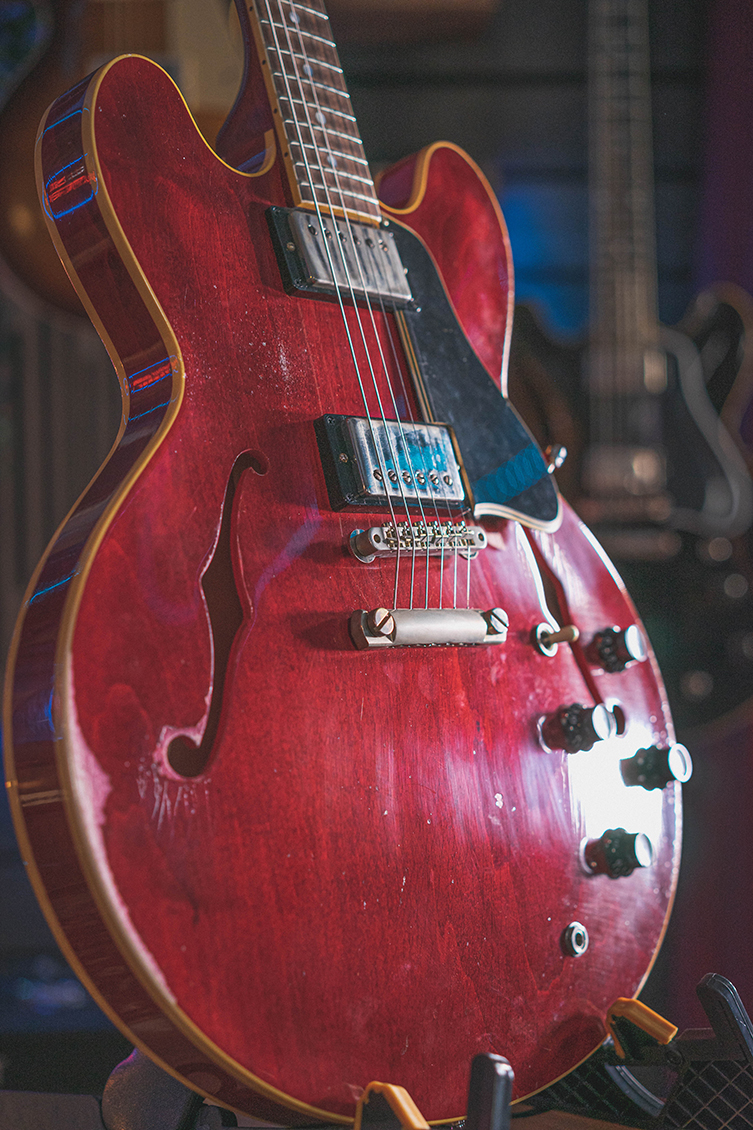
Gibson guitars can be expensive, but crucially, a great many of them are pretty competitive for USA-made instruments. Top end stuff from the Custom Shop costs a lot, but that’s always been the case and isn’t necessarily indicative of the typical Gibson player.
My take on it is that you’ll be able to find an excellent quality Gibson guitar in a style and finish that you love, at a price that is realistic. Moreover, it’ll be a great sounding guitar that will give a lifetime’s professional quality performance and it’ll also hold onto much of its value, too.
Sounds good to me.
Click to View our Selection of Gibson Electric Guitars


